Abstract
OBJECTIVE: To compare the clinical and economic effects of a strategy using immediate endoscopy to a non-invasive strategy utilizing a serologic test for Helicobacter pylori infection for individuals with symptoms suggestive of peptic ulcer disease. DESIGN: Cost-effectiveness analysis evaluating the clinical and economic effects of alternative management strategies of hypothetical patients with suspected peptic ulcer disease in a computer simulation model. INTERVENTION: Two strategies for hypothetical patients with suspected ulcer disease were evaluated: 1) Immediate endoscopy and biopsy for H. pylori, using antisecretory treatment in all patients with documented ulcers and adding antibiotic eradication therapy for those patients with ulcers whose biopsies were positive for H. pylori. 2) Empiric treatment with antisecretory therapy and serologic testing for H. pylori for all patients, using antibiotic eradication therapy only in patients testing positive for H. pylori. MEASUREMENTS: Cost per ulcer cured over a one-year study period. RESULTS: The more cost-effective strategy was the test-and-treat strategy (Strategy 2) with $4481 cost per ulcer cured. The immediate endoscopy strategy resulted in $8045 cost per ulcer cured. The cost-effectiveness advantage of the non-invasive strategy diminished as the cost of endoscopy fell or as the probability of recurrent symptoms rose in patients initially managed without endoscopy. CONCLUSION: Endoscopy, though costly, precisely guided diagnosis and treatment and, thus, potentially reduced the number of patients inappropriately treated. However, cost-effectiveness analysis supports the continued practice of initial non-invasive management of patients with symptoms suggestive of peptic ulcer disease, achieving the benefits of H. pylori eradication through the use of serologic testing to guide antibiotic use.
Full text
PDF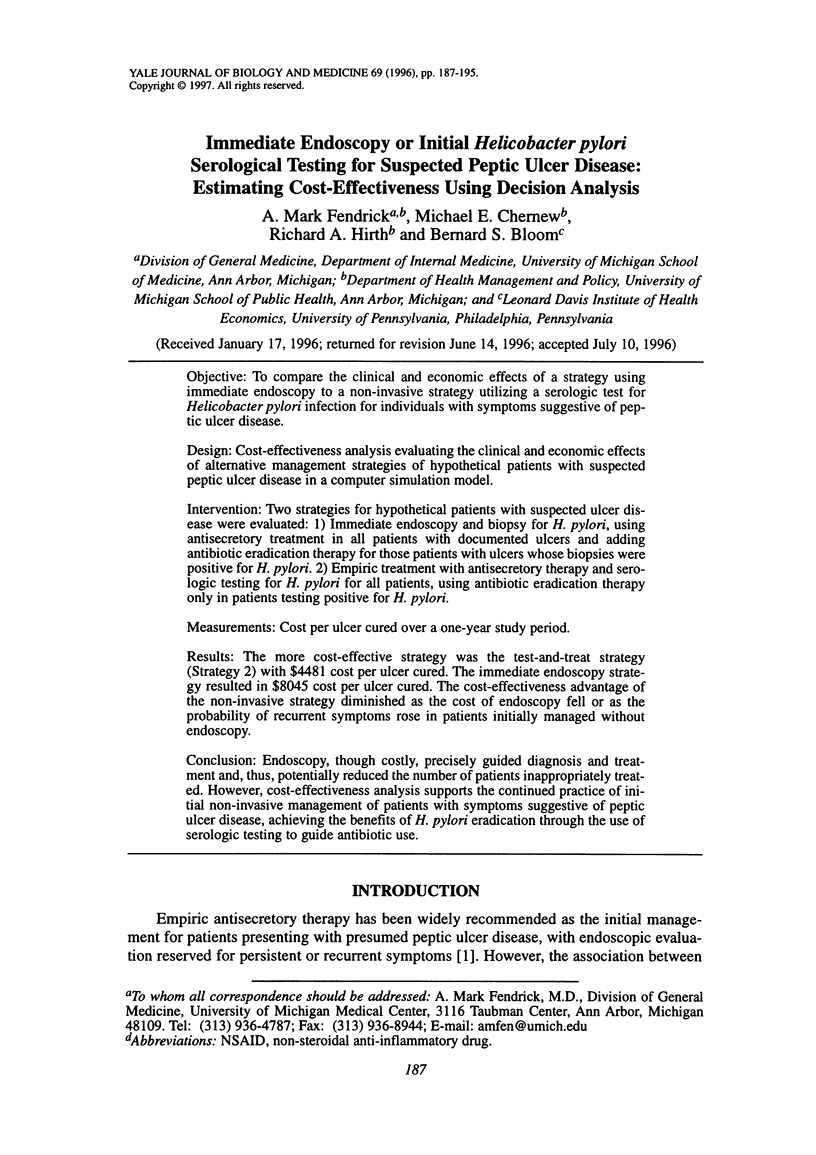
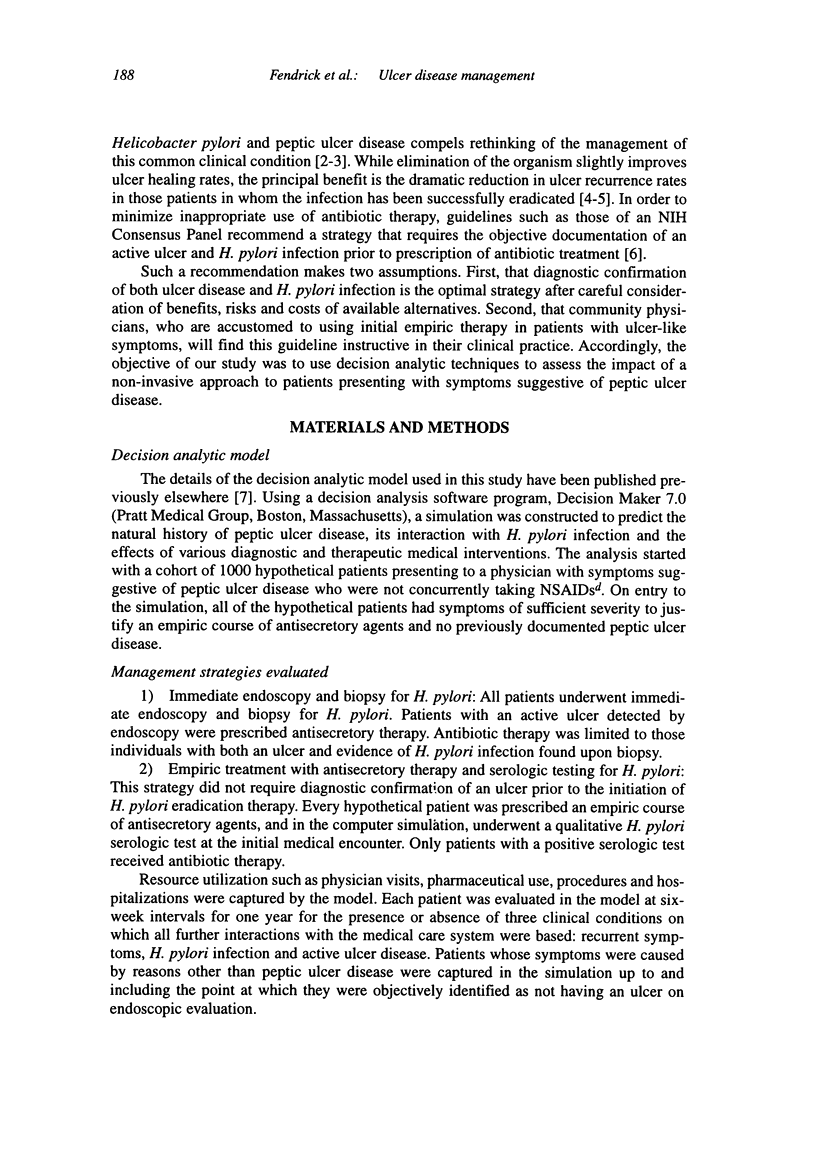
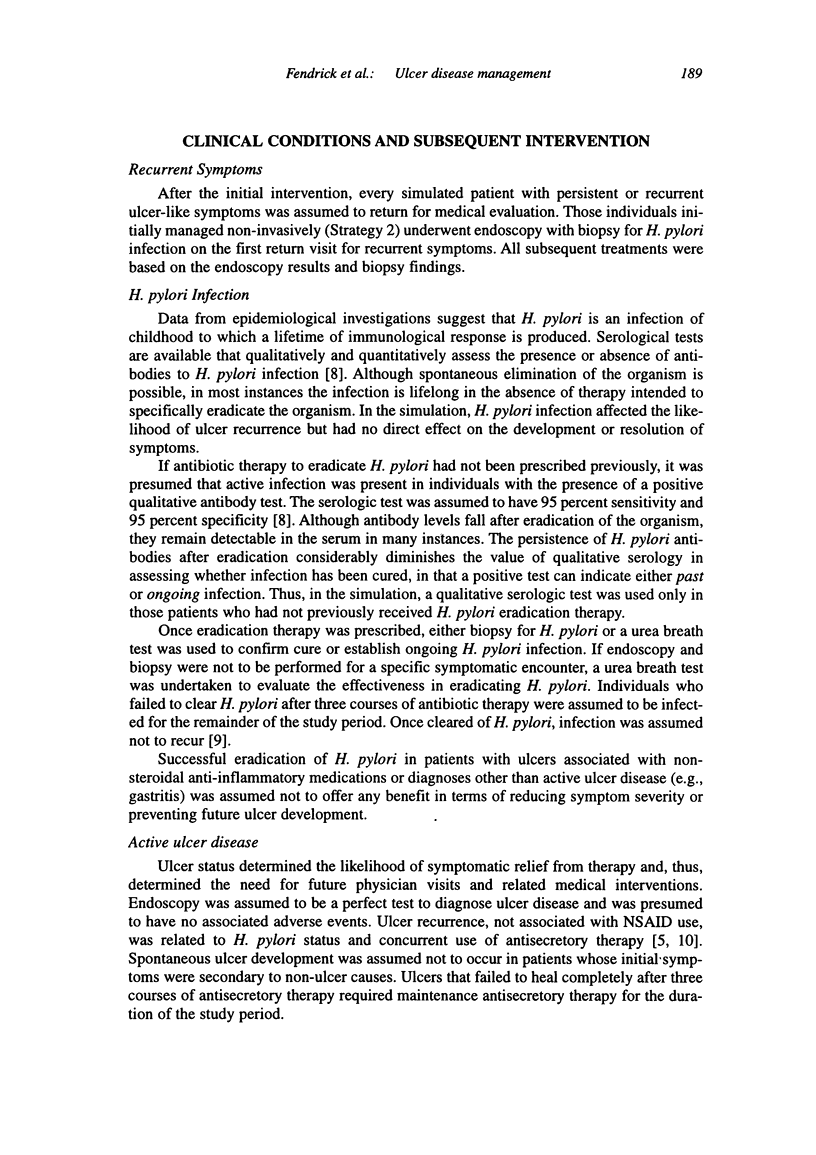
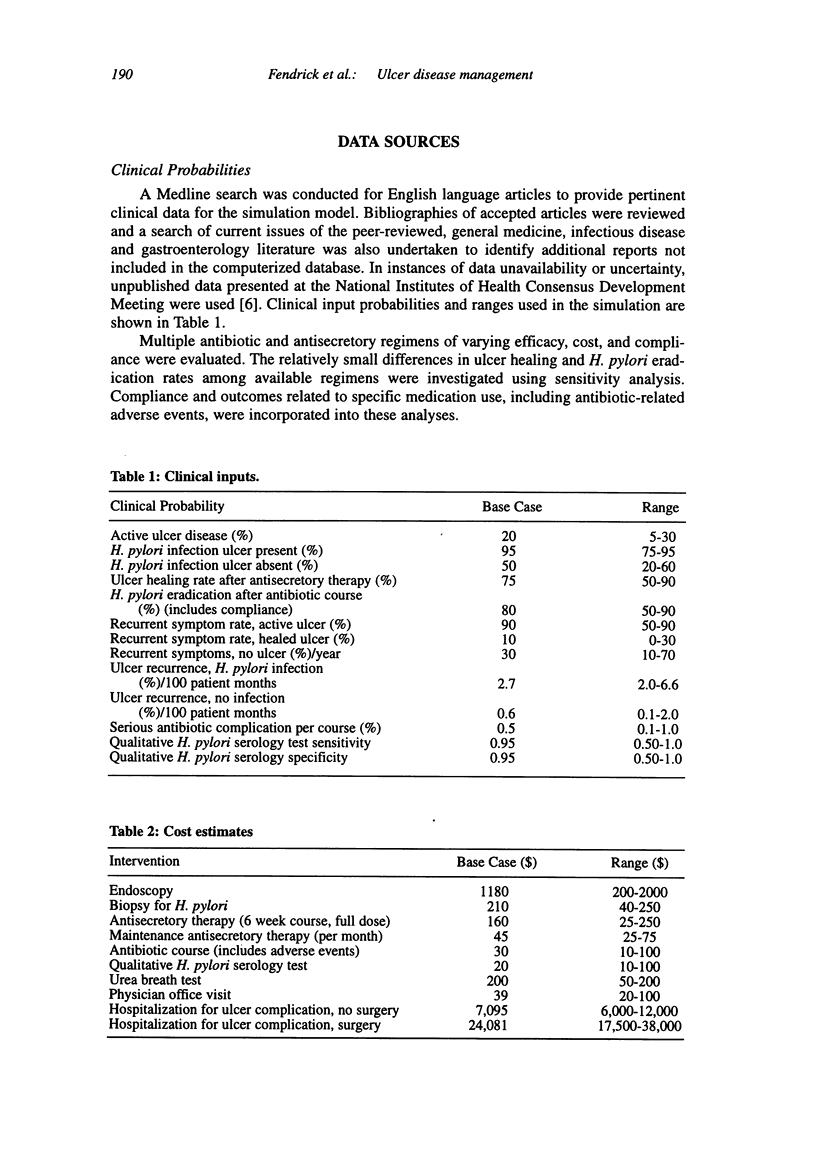
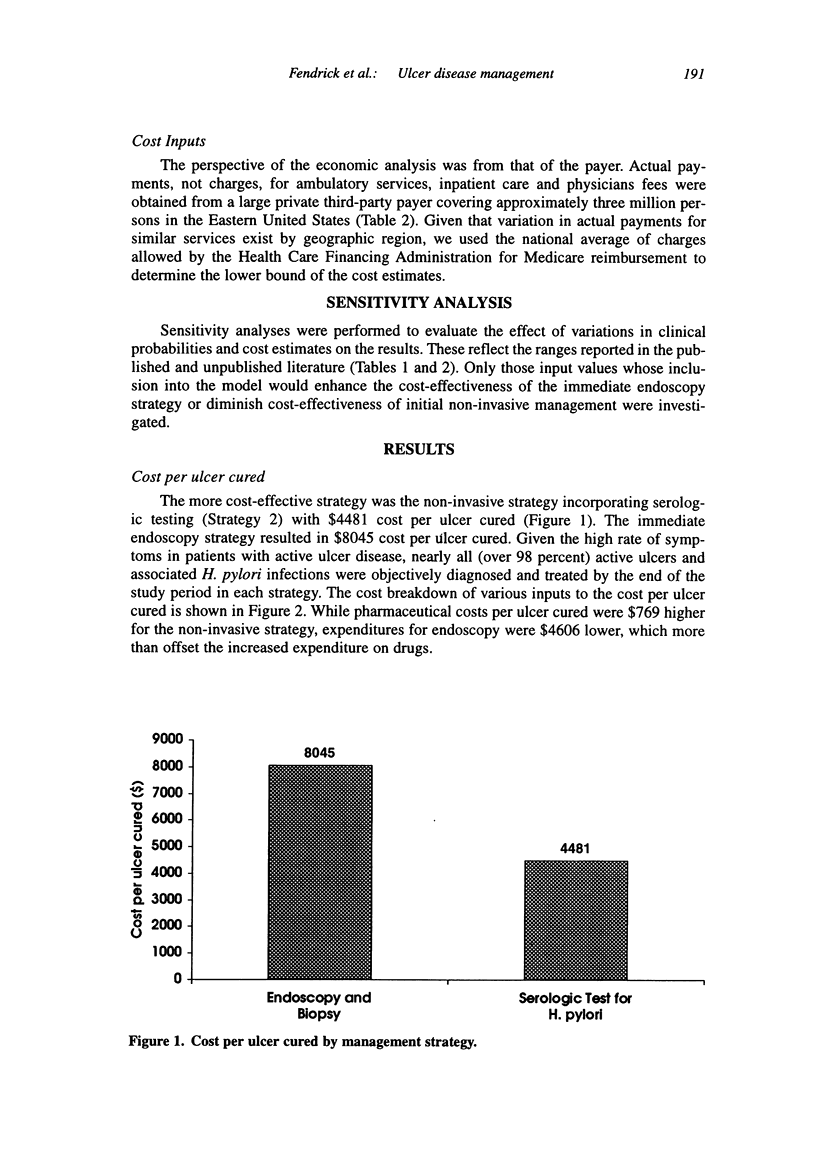
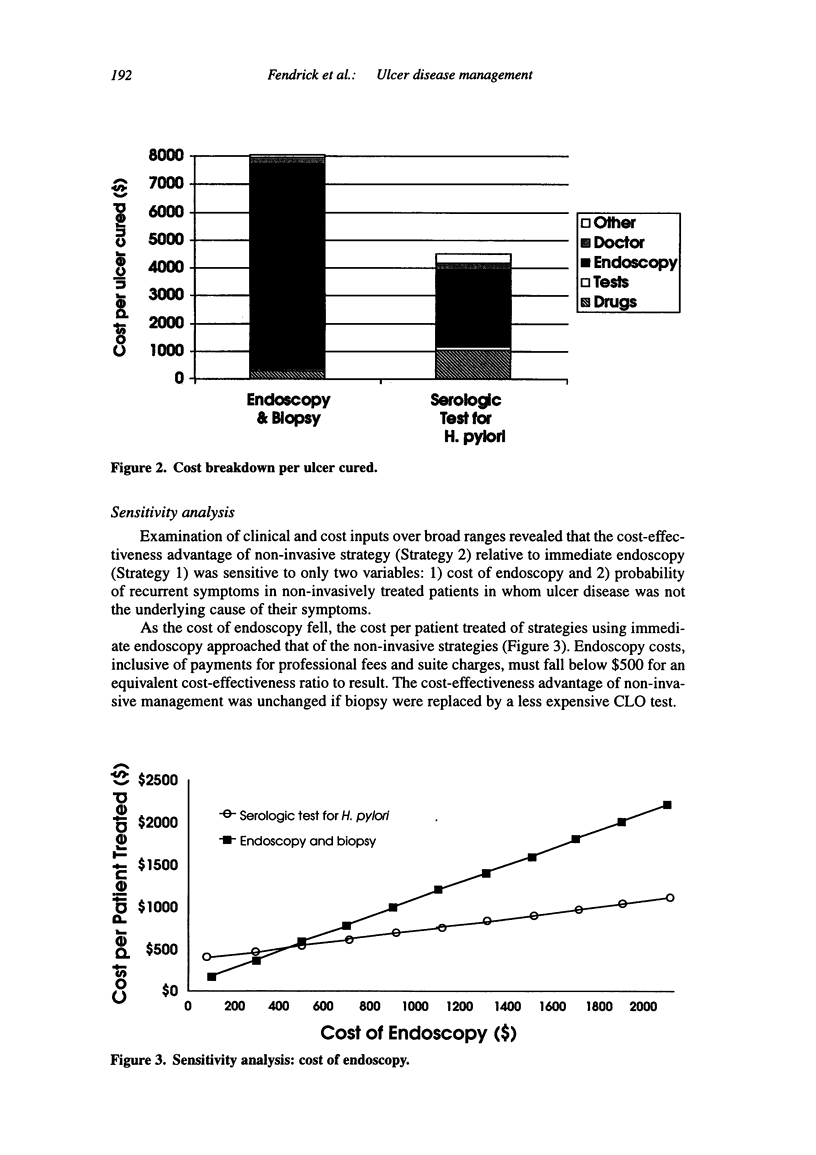
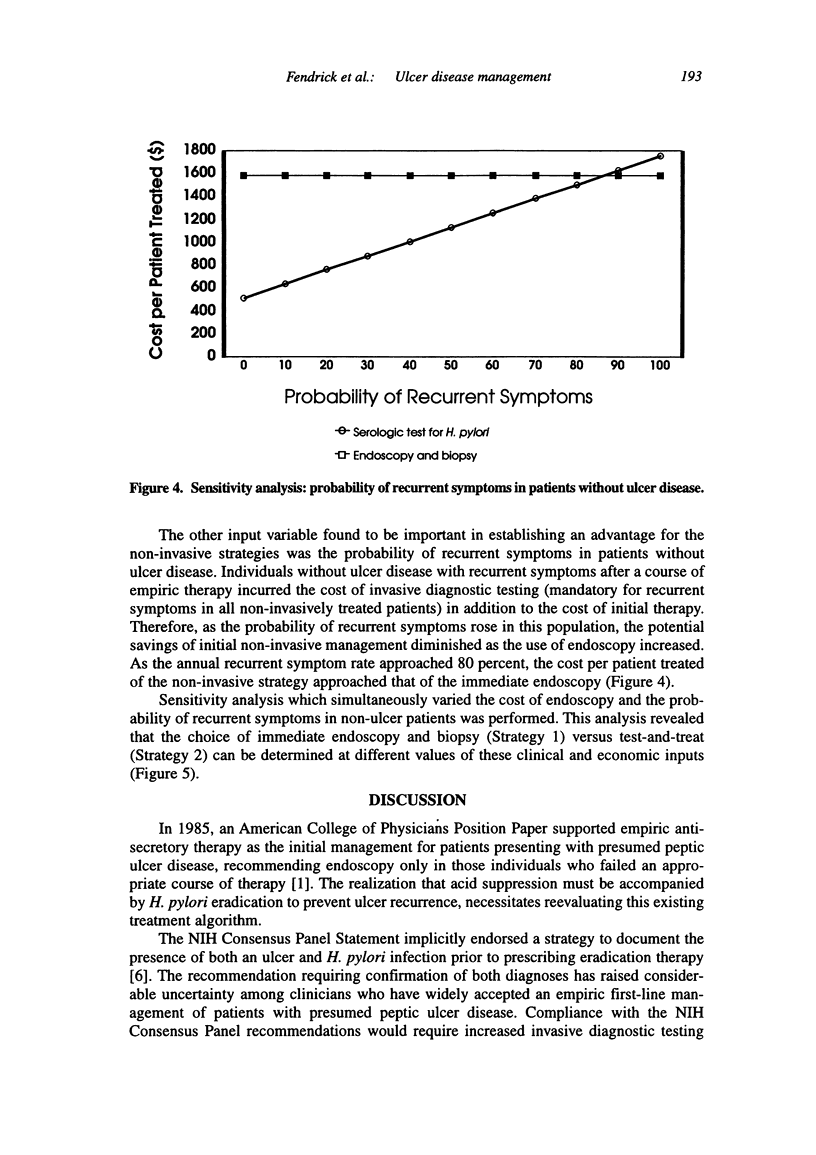
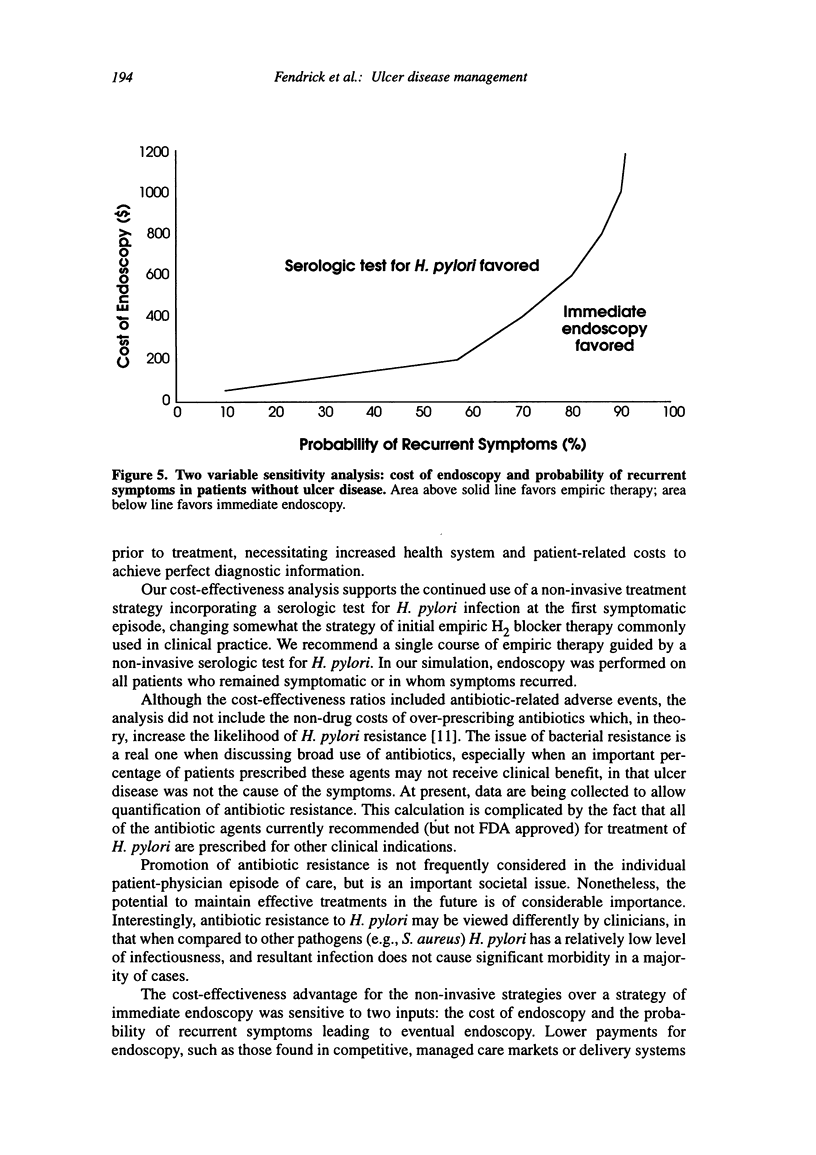
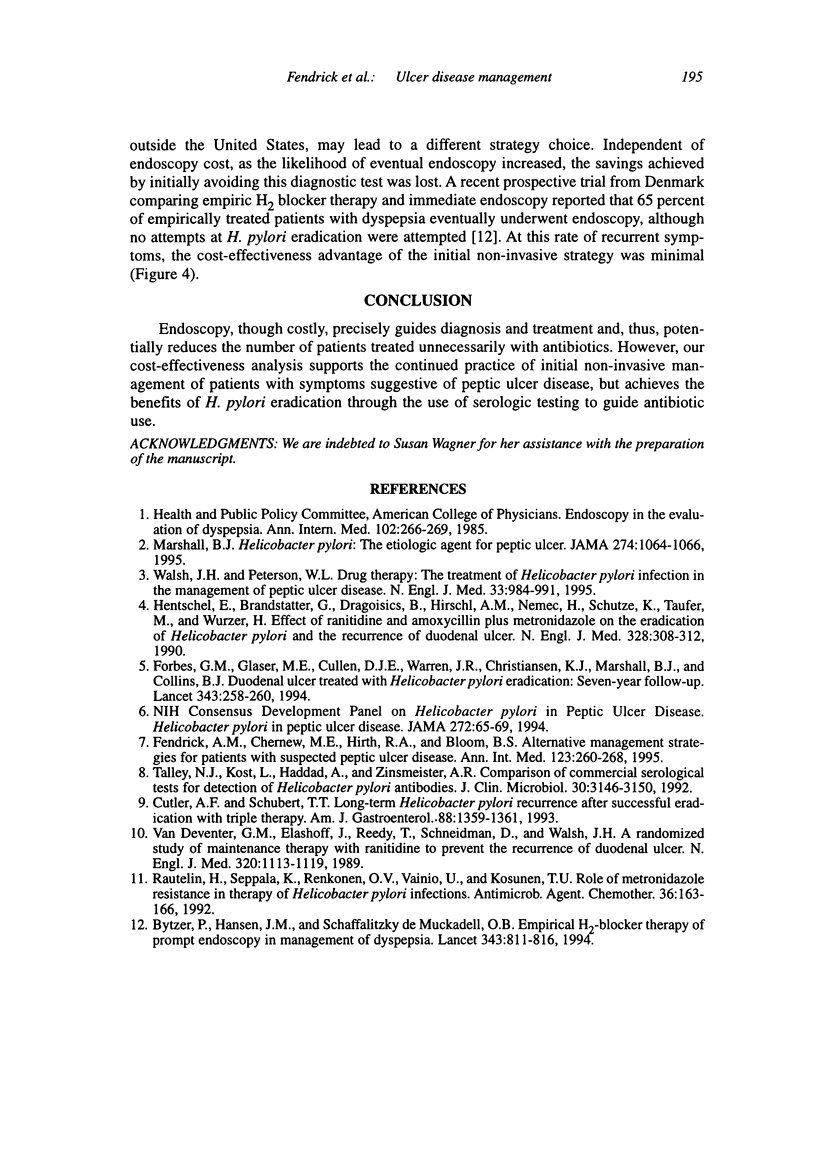
Selected References
These references are in PubMed. This may not be the complete list of references from this article.
- Bytzer P., Hansen J. M., Schaffalitzky de Muckadell O. B. Empirical H2-blocker therapy or prompt endoscopy in management of dyspepsia. Lancet. 1994 Apr 2;343(8901):811–816. doi: 10.1016/s0140-6736(94)92023-0. [DOI] [PubMed] [Google Scholar]
- Cutler A. F., Schubert T. T. Long-term Helicobacter pylori recurrence after successful eradication with triple therapy. Am J Gastroenterol. 1993 Sep;88(9):1359–1361. [PubMed] [Google Scholar]
- Fendrick A. M., Chernew M. E., Hirth R. A., Bloom B. S. Alternative management strategies for patients with suspected peptic ulcer disease. Ann Intern Med. 1995 Aug 15;123(4):260–268. doi: 10.7326/0003-4819-123-4-199508150-00003. [DOI] [PubMed] [Google Scholar]
- Forbes G. M., Glaser M. E., Cullen D. J., Warren J. R., Christiansen K. J., Marshall B. J., Collins B. J. Duodenal ulcer treated with Helicobacter pylori eradication: seven-year follow-up. Lancet. 1994 Jan 29;343(8892):258–260. doi: 10.1016/s0140-6736(94)91111-8. [DOI] [PubMed] [Google Scholar]
- Hentschel E., Brandstätter G., Dragosics B., Hirschl A. M., Nemec H., Schütze K., Taufer M., Wurzer H. Effect of ranitidine and amoxicillin plus metronidazole on the eradication of Helicobacter pylori and the recurrence of duodenal ulcer. N Engl J Med. 1993 Feb 4;328(5):308–312. doi: 10.1056/NEJM199302043280503. [DOI] [PubMed] [Google Scholar]
- Marshall B. J. The 1995 Albert Lasker Medical Research Award. Helicobacter pylori. The etiologic agent for peptic ulcer. JAMA. 1995 Oct 4;274(13):1064–1066. doi: 10.1001/jama.274.13.1064. [DOI] [PubMed] [Google Scholar]
- NIH Consensus Conference. Helicobacter pylori in peptic ulcer disease. NIH Consensus Development Panel on Helicobacter pylori in Peptic Ulcer Disease. JAMA. 1994 Jul 6;272(1):65–69. [PubMed] [Google Scholar]
- Rautelin H., Seppälä K., Renkonen O. V., Vainio U., Kosunen T. U. Role of metronidazole resistance in therapy of Helicobacter pylori infections. Antimicrob Agents Chemother. 1992 Jan;36(1):163–166. doi: 10.1128/aac.36.1.163. [DOI] [PMC free article] [PubMed] [Google Scholar]
- Talley N. J., Kost L., Haddad A., Zinsmeister A. R. Comparison of commercial serological tests for detection of Helicobacter pylori antibodies. J Clin Microbiol. 1992 Dec;30(12):3146–3150. doi: 10.1128/jcm.30.12.3146-3150.1992. [DOI] [PMC free article] [PubMed] [Google Scholar]
- Van Deventer G. M., Elashoff J. D., Reedy T. J., Schneidman D., Walsh J. H. A randomized study of maintenance therapy with ranitidine to prevent the recurrence of duodenal ulcer. N Engl J Med. 1989 Apr 27;320(17):1113–1119. doi: 10.1056/NEJM198904273201704. [DOI] [PubMed] [Google Scholar]
- Walsh J. H., Peterson W. L. The treatment of Helicobacter pylori infection in the management of peptic ulcer disease. N Engl J Med. 1995 Oct 12;333(15):984–991. doi: 10.1056/NEJM199510123331508. [DOI] [PubMed] [Google Scholar]


